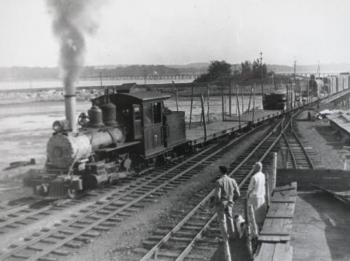The Wiscasset, Waterville and Farmington Railway Museum at 97 Cross Road in Alna has received a significant boost in its fundraising efforts thanks to an $18,000 bequest from the estate of David MacDonald. MacDonald, who passed away in June of 2015, was an avid railway enthusiast and longtime museum member.
According to MacDonald’s sister Carol Sheldon, “He (David) took delight in being a part of the Museum’s progress.”
Thus, when the Museum’s board of directors was contemplating how the donation could be used to its best effect, they opted to apply it to the Museum’s 21 Campaign. The goal of the 21 Campaign is to build enthusiasm and support for the construction of two new steam locomotive boilers. Boilers are the part of the locomotive that generates the steam needed to move. They also give steam locomotives their characteristic shape. One boiler will be for locomotive Number 10, an existing locomotive which is currently out of service. The other will be for locomotive Number 11, which the Museum is building according to plans for an original WW&F locomotive from 1907.
So far the Campaign has raised nearly $50,000 of the $130,000 required to build the two boilers, which are being constructed by Boothbay Railway Village.
“Support has come from across the globe and across the street,” according to campaign director Stephen Piwowarski. “However, we still have a long way to go.”
Tax deductible contributions are being accepted by the railway museum online at www.fundrazr.com/21campaign and via mail at WW&F Railway Museum, 21 Campaign, P.O. Box 242, Alna, ME 04535.
The Wiscasset, Waterville and Farmington Railway Museum is a 501(c)(3) not-for-profit organization established in 1989 to acquire, preserve, and restore the operation of narrow gauge railroads and equipment which operated in the Sheepscot Valley and on other roads and to establish a museum for the display of artifacts for enlightenment and education of the general public concerning the social and economic impact of railroads on the communities served.
































